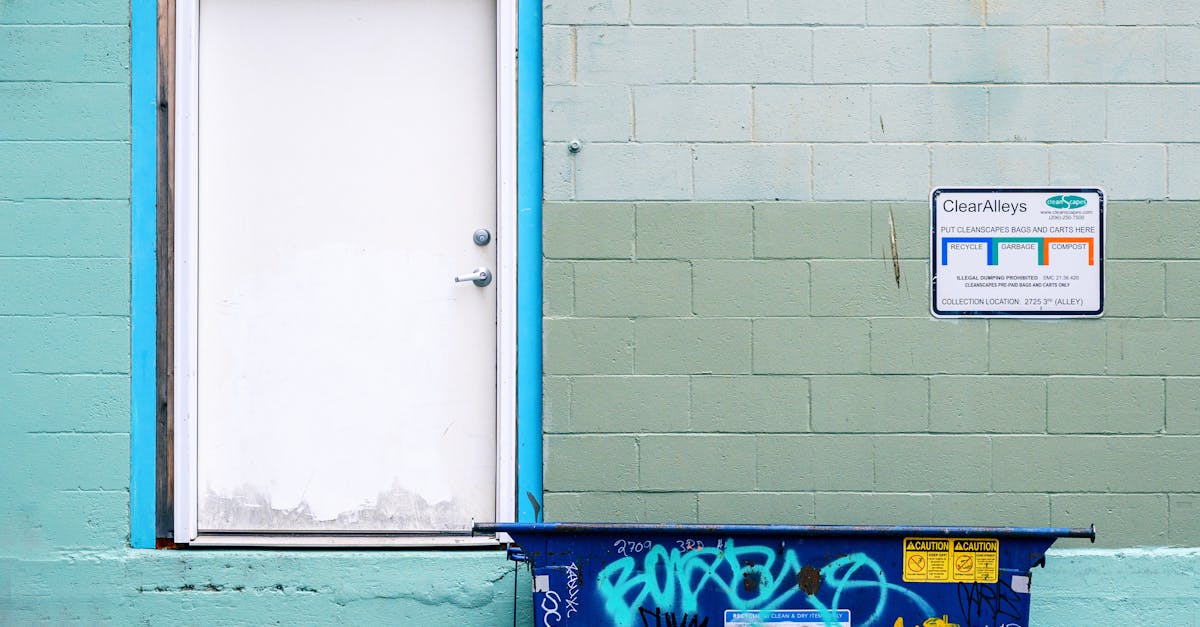What is the measurement of a 20 yard dumpster?

Table Of Contents
Placement Considerations for a 20 Yard Dumpster
When planning to place a 20 yard dumpster, it is essential to assess the area for accessibility. The location should allow for easy maneuvering of the truck during drop-off and pick-up. Consider the proximity to the worksite while ensuring that there are no overhead obstructions like tree branches or power lines that could hinder the delivery process. Maintaining a clear path is crucial for safety and efficiency.
Local regulations often dictate where dumpsters can be placed. Permits may be required for street placement, especially in busy urban areas. Be sure to check with local authorities to understand any zoning laws or restrictions that could impact the placement. This proactive approach helps avoid potential fines and delays, ensuring a smoother rental experience overall.
Tips for Optimal Location
Selecting the right spot for a 20-yard dumpster enhances convenience and efficiency. Consider placing it on a flat, stable surface, ensuring it can handle the weight and size without causing damage. Avoid areas near power lines, trees, or other obstacles that may interfere with disposal tasks. Accessibility for both the truck delivering the dumpster and for users loading it is crucial.
Nearby traffic flow should also be taken into account. Positioning the dumpster away from high-traffic areas can reduce the risk of accidents and improve safety. It's advisable to check local regulations regarding placement, as some municipalities may require permits or have specific guidelines regarding distance from roads and property lines.
Safety Guidelines for Using a 20 Yard Dumpster
While utilizing a 20 yard dumpster, it is crucial to prioritize safety to prevent accidents. Ensure that the area surrounding the dumpster is clear of debris and obstacles. This facilitates easy access for loading waste and minimizes tripping hazards. Wear appropriate safety gear, including gloves and sturdy footwear, when handling materials. Be cautious of sharp or heavy objects that could cause injuries.
It is also important to adhere to weight limits specified by the dumpster rental service. Overloading the dumpster can result in fines or additional fees. Position the dumpster on a stable surface to avoid tipping or shifting during use. When placing large items inside, angle them to maximize space and prevent injuries while loading. Properly securing the contents before transport assists in safe and responsible disposal.
Best Practices for Loading
Maximizing the space inside a 20 yard dumpster requires a strategic approach. Begin by breaking down large items such as furniture and boxes. Doing so allows for better stacking and efficient use of available volume. Position heavier materials at the bottom to create a stable base. Light items can then be placed on top, reducing the risk of crushing them during transport.
Loading the dumpster in layers can also contribute to balanced weight distribution. Fill the dumpster to the maximum fill line without exceeding the rim. This ensures safe transport and helps prevent accidents or fines. Keep in mind, some materials may need to be disposed of separately, such as electronics or hazardous waste, due to regulations and pollution concerns. Always check local guidelines before loading to ensure compliance.
Environmental Impact of Dumpster Usage
Dumpsters play a significant role in waste management practices, which can directly influence the environment. When used effectively, they can streamline the disposal process for construction, renovation, and other projects, minimizing litter and pollution. Reducing scattered waste contributes to cleaner surroundings and can help maintain local ecosystems. Furthermore, the efficient transportation and disposal of large quantities of waste can lead to better management of landfills, ultimately reducing the environmental strain caused by waste accumulation.
The choice of materials disposed of in dumpsters also impacts sustainability efforts. Many items accepted in a 20-yard dumpster can be recycled or reused, thereby decreasing the volume of waste sent to landfills. By promoting practices such as sorting recyclable materials and adhering to waste management guidelines, individuals and businesses can enhance their environmental contributions. Encouraging responsible disposal habits fosters a culture of sustainability and can lead to long-term benefits for communities and the planet.
Recycling and Waste Management
Effective recycling and waste management play crucial roles in minimizing environmental impact. When using a 20 yard dumpster, it is essential to understand which materials can be recycled versus those that must be disposed of in a landfill. Common recyclable items include metals, plastics, and glass. Many local recycling programs have specific guidelines. Familiarizing oneself with these can enhance the efficiency of waste disposal.
Separating recyclables from general waste before placing them in the dumpster can facilitate the recycling process. Consider contacting local waste management facilities to determine the best practices for sorting materials. Implementing a clear strategy for managing waste not only helps preserve resources but also contributes to a cleaner environment. Proper recycling reduces the strain on landfills and aligns with sustainable practices.
FAQS
What are the dimensions of a 20 yard dumpster?
A standard 20 yard dumpster typically measures approximately 22 feet long, 8 feet wide, and 4.5 feet high.
How much waste can a 20 yard dumpster hold?
A 20 yard dumpster can hold about 20 cubic yards of waste, which is roughly equivalent to 6 pickup truck loads.
What types of projects are suitable for a 20 yard dumpster?
A 20 yard dumpster is ideal for medium to large home renovation projects, cleanouts, roofing jobs, and landscaping projects.
Can I place a 20 yard dumpster on the street?
Yes, you can place a 20 yard dumpster on the street, but you may need a permit from your local municipality, depending on local regulations.
How do I determine if a 20 yard dumpster is right for my project?
To determine if a 20 yard dumpster is suitable, consider the volume of waste generated by your project and compare it to the capacity of the dumpster, as well as the space available for placement.